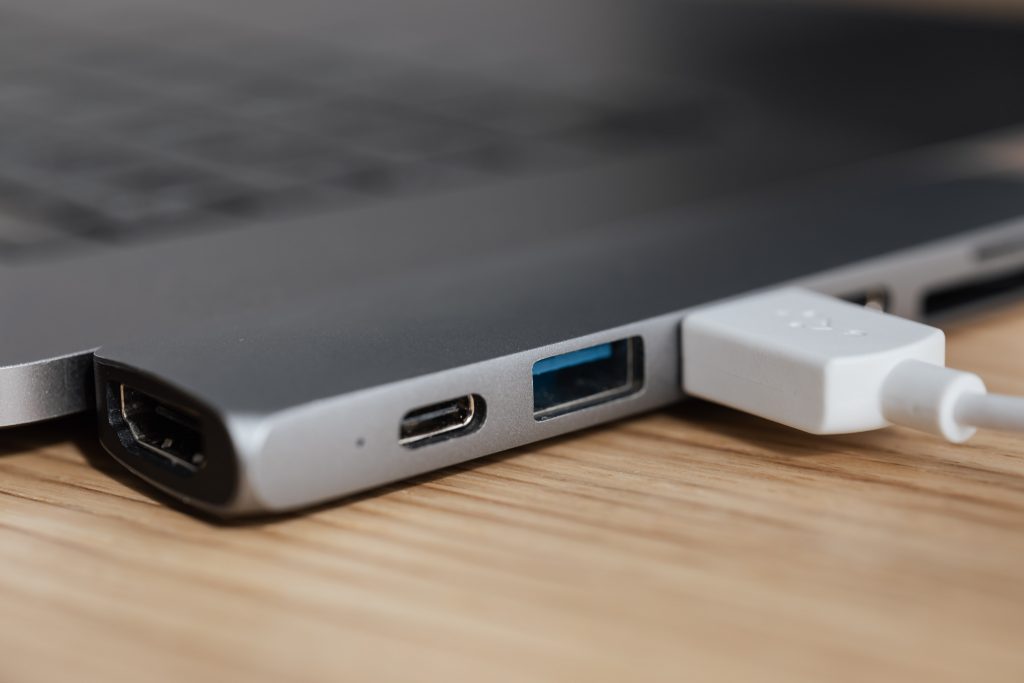… [Trackback]
[…] There you will find 48537 more Info to that Topic: blog.neterra.cloud/en/why-does-usb4-matter-a-brief-history-of-the-usb/ […]

The USB was established as a standard to unite the connector types. Throughout the last 20 years it has been steadily working towards this goal, slowly removing the number of connector types up until Type-C. Now there is a brand new version USB4 which is easy to write and understand. But what else is good about it?
It got released back in 1996 with two specs, Low Speed 1.5 Mbit/s and Full Speed of 12 Mbit/s. It got commercially available with its 1.1 revision in 1998. At that time there were just standard Type-A and Type-B connectors.
It came out in 2000, adding a faster data transfer of up to 480 Mbit/s. There were some great new features like On-The-Go functionality for direct communication of two devices, Battery Changing capability, Mini-A, Mini-B, and Micro-USB connectors.
The first revision 3.0 dates back to 2008. It was backward compatible with the previous revision and it had a blue color for differentiation. With the SuperSpeed transfer mode, the speed got up to 5.0 Gbit/s.
Note: One of the big problems of 3.1 XXX revisions is the names. They were changed many times after their release. There are also various stickers for marketing purposes that consumers hardly understand. We are using the latest name of the standards. For example, 3.2 was previously (USB 3.2 Gen 2 x 2).
Later in 2013, the 3.1 was released. The most important innovation was the new connector – Type-C. The data rate was up to 10 Gbit/s,
In 2017 we got USB 3.2 with SuperSpeed (10 Gbit/s) and SuperSpeed+(20 Gbit/s).
USB4 is the latest version. It is based on Intel’s Thunderbolt 3 protocol. It doubles the speed of the previous standard (40 Gbit/s) and there are more great things.
It supports the PD (Power Delivery) standard for charging with intelligent charging of up to 100W. You will be able to use one charger for most of your new devices which have the USB4 standard port.
There is something for video enthusiasts too. The new standard allows 16K at 60FPS, 8k at the same rate, and 4k at 144Hz HDR. A bit of overkill, but at least very future proof. This is thanks to the DisplayPort Alt Mode 2.0. In this mode, the speed can go double (80 Gbit/s) by using all the lanes in one direction only.
Adaptive bandwidth allocation. Let’s examine the need to connect a monitor and an HDD. The older USBs would just split the connection in half. Now the USB designates less bandwidth for the monitor, letting the HDD to use the majority.
It is backward compatible with older USBs Type-C. You can use your current dongles with new devices.
USB4 has one very important benefit – it is an open standard. It means that companies that produce consumer electronics don’t need to pay royalties to the owner of the standard.
As you can expect, it will be more expensive, because it involves a lot of other technologies inside.
Compatible with Thunderbolt 3, but this does not mean every USB4 will have it included. The producers would have to pay to include it.
USB4 is definitely an interesting improvement that deserves a separate number. We can’t wait to see the first devices later this year. Hopefully, it will unite the producers even more and have far fewer varieties than before.
… [Trackback]
[…] There you will find 48537 more Info to that Topic: blog.neterra.cloud/en/why-does-usb4-matter-a-brief-history-of-the-usb/ […]
… [Trackback]
[…] Find More Information here on that Topic: blog.neterra.cloud/en/why-does-usb4-matter-a-brief-history-of-the-usb/ […]
… [Trackback]
[…] There you will find 6015 additional Info on that Topic: blog.neterra.cloud/en/why-does-usb4-matter-a-brief-history-of-the-usb/ […]
… [Trackback]
[…] Read More on that Topic: blog.neterra.cloud/en/why-does-usb4-matter-a-brief-history-of-the-usb/ […]
… [Trackback]
[…] Find More on that Topic: blog.neterra.cloud/en/why-does-usb4-matter-a-brief-history-of-the-usb/ […]
… [Trackback]
[…] Find More here on that Topic: blog.neterra.cloud/en/why-does-usb4-matter-a-brief-history-of-the-usb/ […]
… [Trackback]
[…] Read More on that Topic: blog.neterra.cloud/en/why-does-usb4-matter-a-brief-history-of-the-usb/ […]
… [Trackback]
[…] Find More Information here on that Topic: blog.neterra.cloud/en/why-does-usb4-matter-a-brief-history-of-the-usb/ […]
… [Trackback]
[…] Here you will find 71589 more Info to that Topic: blog.neterra.cloud/en/why-does-usb4-matter-a-brief-history-of-the-usb/ […]
… [Trackback]
[…] Read More Information here to that Topic: blog.neterra.cloud/en/why-does-usb4-matter-a-brief-history-of-the-usb/ […]
… [Trackback]
[…] There you will find 90957 more Information on that Topic: blog.neterra.cloud/en/why-does-usb4-matter-a-brief-history-of-the-usb/ […]
… [Trackback]
[…] There you will find 97635 more Information to that Topic: blog.neterra.cloud/en/why-does-usb4-matter-a-brief-history-of-the-usb/ […]
… [Trackback]
[…] Information to that Topic: blog.neterra.cloud/en/why-does-usb4-matter-a-brief-history-of-the-usb/ […]
… [Trackback]
[…] Find More on that Topic: blog.neterra.cloud/en/why-does-usb4-matter-a-brief-history-of-the-usb/ […]
… [Trackback]
[…] Find More on on that Topic: blog.neterra.cloud/en/why-does-usb4-matter-a-brief-history-of-the-usb/ […]
… [Trackback]
[…] Here you can find 739 additional Information on that Topic: blog.neterra.cloud/en/why-does-usb4-matter-a-brief-history-of-the-usb/ […]
… [Trackback]
[…] Find More on on that Topic: blog.neterra.cloud/en/why-does-usb4-matter-a-brief-history-of-the-usb/ […]
… [Trackback]
[…] Information on that Topic: blog.neterra.cloud/en/why-does-usb4-matter-a-brief-history-of-the-usb/ […]
… [Trackback]
[…] Read More here on that Topic: blog.neterra.cloud/en/why-does-usb4-matter-a-brief-history-of-the-usb/ […]
… [Trackback]
[…] Read More here on that Topic: blog.neterra.cloud/en/why-does-usb4-matter-a-brief-history-of-the-usb/ […]
… [Trackback]
[…] Find More here on that Topic: blog.neterra.cloud/en/why-does-usb4-matter-a-brief-history-of-the-usb/ […]
… [Trackback]
[…] Read More on that Topic: blog.neterra.cloud/en/why-does-usb4-matter-a-brief-history-of-the-usb/ […]